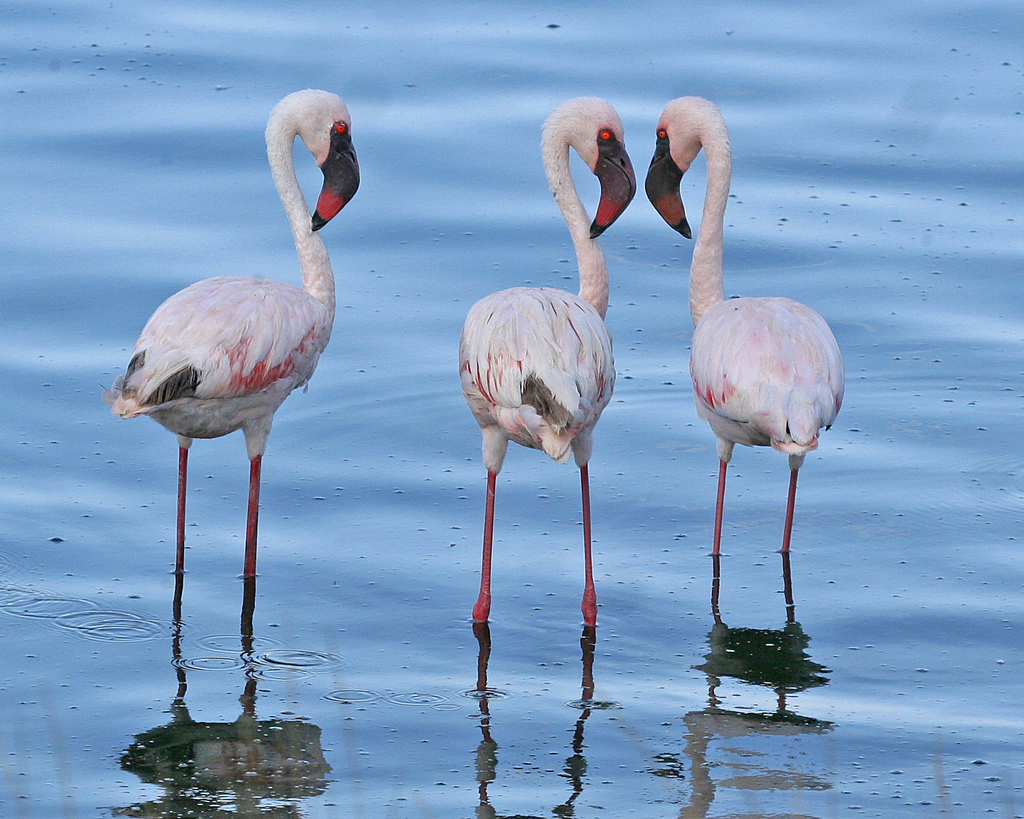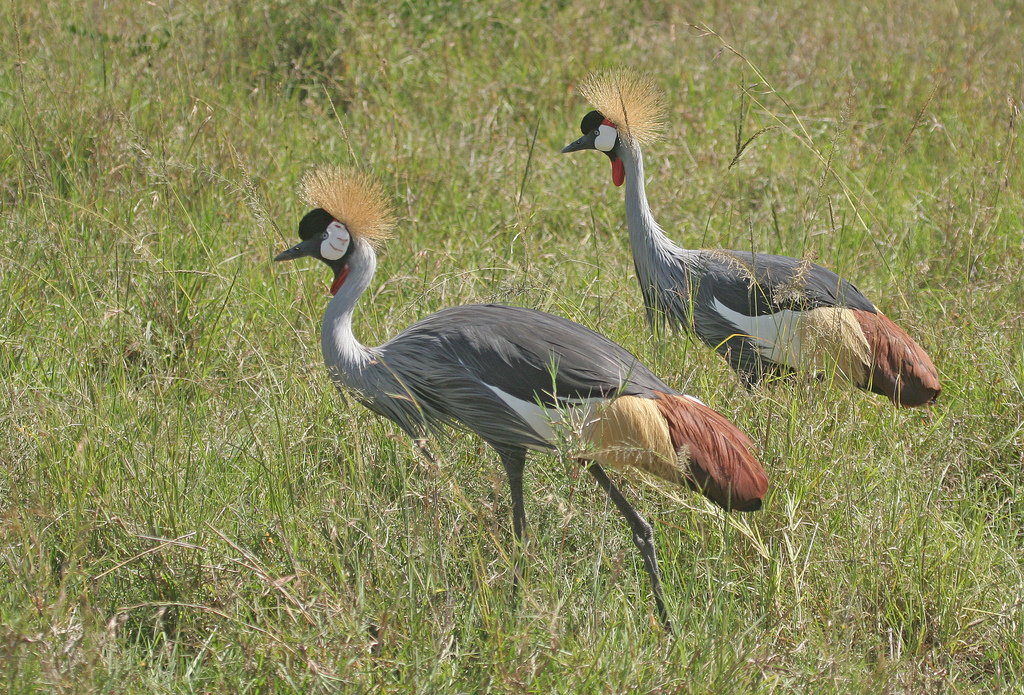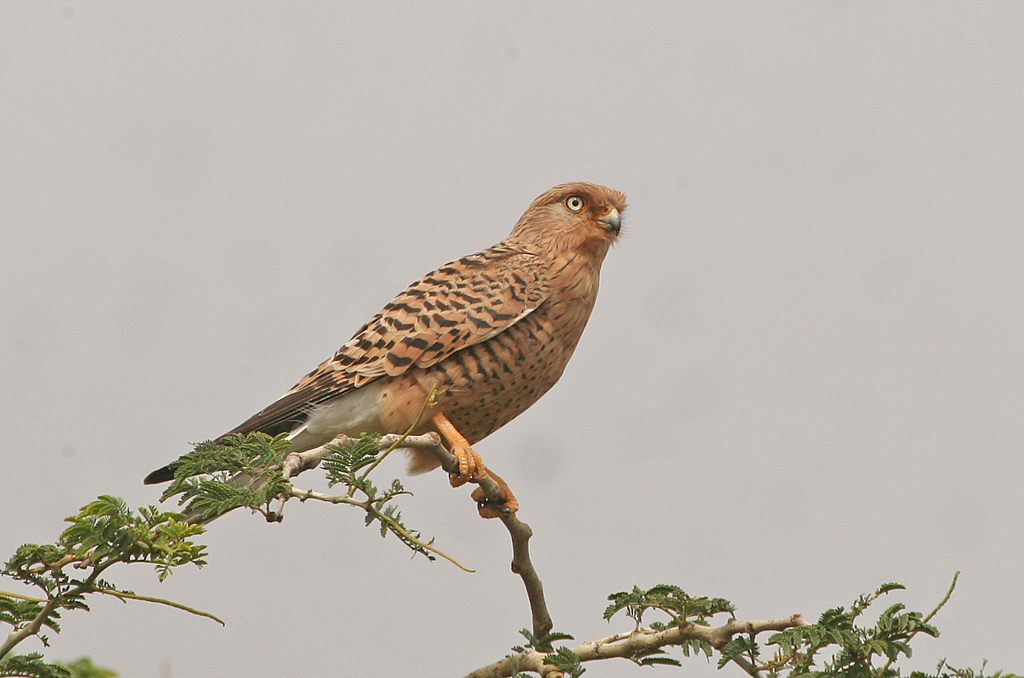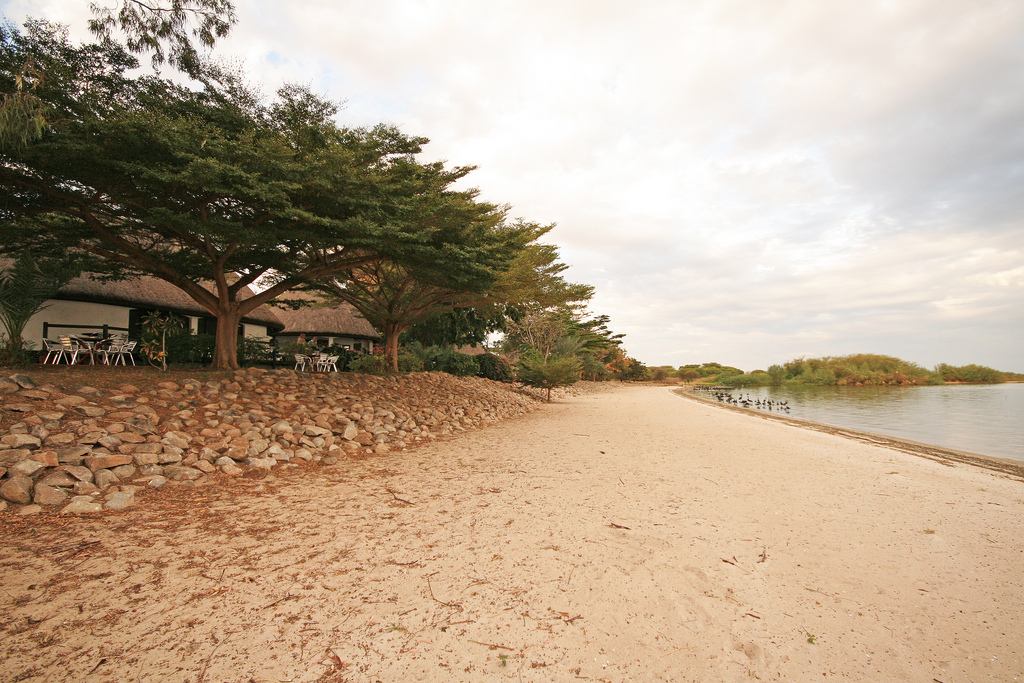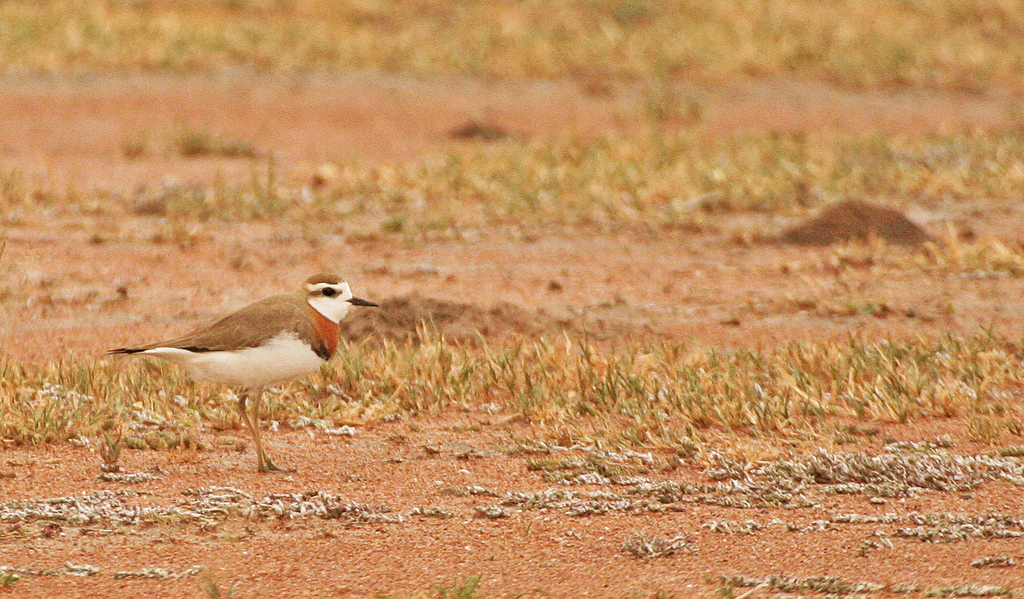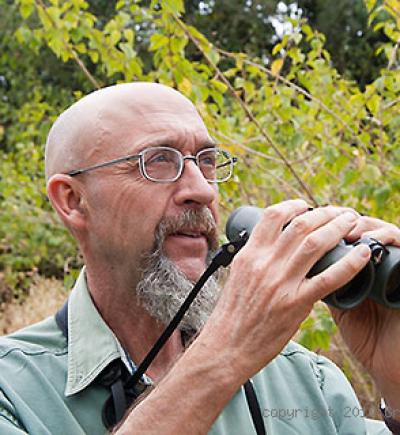Tanzania: Kilimanjaro to the Serengeti
-
Nov 5-20, 2025
James Wolstencroft
-
Mar 2026
James Wolstencroft
2025
(March 2025 Tour Price: $11,850)
2026
March 2026 Tour Price to be Determined
2025
(March 2025 Tour Price: $11,850)
2026
March 2026 Tour Price to be Determined
At the time of independence, Julius Nyerere, the first president of Tanzania, was well aware of the global significance of his young nation’s wealth of wildlife, and made great efforts to ensure its security. Consequently almost one quarter of the country is today well maintained within national parks and various types of wildlife reserve. The most famous of these are in the north and they have become the framework for what has become a classic safari, our continuously refined and updated WINGS Tanzania bird-and-mammal watching tour.
We’ll begin at a fold in the densely forested slopes of Mount Meru, an elegantly chiseled pyramid of a (dormant) volcano standing in the lee of the taller, more famous yet often somehow less daunting Mount Kilimanjaro. After spending our first two nights here at an historic lodge we’ll descend toward East Africa’s Great Rift Valley through the unique baobab savanna of Tarangire National Park. We’ll visit the modest Lake Manyara National Park on the floor of the Great Rift Valley before climbing once again into cooler montane elevations, ascending via a zig-zag road up the steep western wall of the rift to the edge of the mighty escarpment and a small town called Karatu on the approaches to two of the most fabled tapestries within the wondrous gallery of East Africa’s wildlife destinations, the captivating beauty that is Ngorongoro Crater, and the all embracing grasslands and woodlands of the seemingly infinite Serengeti National Park.
After nine days of exploration in this contiguous “two park wildlife haven” we’ll draw our safari to a close, passing two peaceful nights at a very relaxed lodge on the tranquil, papyrus-fringed shoreline of Africa’s greatest lake Nyanza-Victoria before flying back east, from the nation’s second city of Mwanza, to Kilimanjaro International Airport. A final night passed at the remarkably bird-rich KIA lodge will be followed by a morning’s birding in the dry acacia bush of the nearby Maasai steppe.
This by-now classic safari bird and mammal tour (it was conceived in 2010) of fifteen field days should yield well over five hundred bird species together with what must be an almost unrivalled list of seventy-plus mammal species seen. It therefore provides both a perfect “faunal introduction” for any first time visitor to East and Central Africa as well as a reminder to repeat visitors that a visit here is one of if not our planet’s great natural history experience. Furthermore the majority of these birds and mammals may be observed at close range and with little effort from our fully-customized safari vehicle, and hence watched very well indeed.
Note: The information presented below has been extracted from our formal General Information for this tour. It covers topics we feel potential registrants may wish to consider before booking space. The complete General Information for this tour will be sent to all tour registrants and of course supplemental information, if needed, is available from the WINGS office.
ENTERING TANZANIA: U.S. citizens should have a passport valid for at least six months after the date they expect to depart Tanzania and with at least one blank page for entry and exits stamps. A Tanzania tourist visa and an on-going air ticket are also required. The visa can be obtained on arrival in Tanzania but wait times can be long.
A current yellow fever vacinnation is not required for entry into Tanzania unless you are coming directly from a country where yellow fever is known to be present.
Travellers may obtain the latest information and details from the Embassy of The United Republic of Tanzania, 2139 R Street, N.W., Washington, D.C. 20008, telephone (202) 939-6125, or online at www.tanzaniaembassy-us.org.
Non-U.S. citizens should contact their nearest Tanzanian embassy or consulate.
Note that as of June 2019 it is illegal to bring any plastic bags of any kind into Tanzania. This includes any clear zip lock bags you may have carried liquids in onto the aircraft. If you do take any plastic bags onto the aircraft, you are advised to leave them on the plane when disembarking. Anyone found at Customs with plastic bags in their possession faces a substantial fine.
COUNTRY INFORMATION: You can review the U.S. Department of State Country Specific Travel Information here: https://travel.state.gov/content/travel.html and the CIA World Factbook here: https://www.cia.gov/the-world-factbook/. Review foreign travel advice from the UK government here: https://www.gov.uk/foreign-travel-advice and travel advice and advisories from the Government of Canada here: https://travel.gc.ca/travelling/advisories.
PACE OF THE TOUR: There will be early starts on most days but some of these will be optional pre-breakfast excursions. Note, due to the distances we cover and the fact that we spend a lot of time in national parks, we spend a lot of time in the vehicles – see the section on Transport for more information. Our schedule in the National Parks and Game Reserves will vary with some days being broken into morning and afternoon drives, with a midday break, and others given over to spending all day in the field with packed lunches. Most walks on this tour are not very strenuous, although there will be walking on uneven ground when we are not confined to a Park. Much of the driving will be on unpaved roads but these are usually in good condition, providing there has not been a lot of rain. Please note that owing to long distances covered, it may not always be possible to find places for toilet stops and there will be occasions when a ‘bush stop’ is the only alternative.
HEALTH: The Centers for Disease Control and Prevention (CDC) recommends that all travelers be up to date on routine vaccinations. These include measles-mumps-rubella (MMR) vaccine, diphtheria-tetanus-pertussis vaccine, varicella (chickenpox) vaccine, polio vaccine, and your yearly flu shot.
They further recommend that most travelers have protection against Hepatitis A and Typhoid. Please contact your doctor well in advance of your tour’s departure as some medications must be initiated weeks before the period of possible exposure.
The most current information about travelers’ health recommendations can be found on the CDC’s Travel Health website here: https://wwwnc.cdc.gov/travel/destinations/list
Please be sure to contact your physician or health professional at least six weeks in advance of departure to complete your inoculation series, if any, and to review the latest malarial and other advisories.
Malaria: The CDC currently recommends taking an anti-malarial drug when traveling in Tanzania. Since chloroquine-resistant malaria has been confirmed in Tanzania, atovaquone/proguanil (Malarone™), doxycycline or mefloquine (Lariam™) are the currently recommended prophylaxes. Please consult your physician/
Yellow Fever: The CDC does not currently recommends getting a yellow fever vaccination. Again, please consult your physician. NOTE: In the past you were required to show a yellow fever vaccination certificate when entering the country. The situation surrounding this is now somewhat confused, but generally they are no longer required if you are entering Tanzania from a country where yellow fever is not endemic. However if immediately prior to entering Tanzania you have spent time in a country where yellow fever can be found, then it is probably wise to have proof of vaccination with you. This does not apply if you have just transited through a country en route.
Altitude: The tour reaches an altitude of about 7500 feet on the rim of the Ngorogoro Crater.
Smoking: Smoking is prohibited in the vehicles or when the group is gathered for meals, checklists, etc. If you are sharing a room with a nonsmoker, please do not smoke in the room. If you smoke in the field, do so well away and downwind from the group. If any location where the group is gathered has a stricter policy than the WINGS policy, that stricter policy will prevail.
Miscellaneous: Biting insects are not numerous although mosquitoes and ticks occur locally. We recommend using insect repellents with a high concentration of DEET. However, care must be taken to avoid getting the DEET repellents on optical equipment as DEET dissolves rubber and plastic and can damage coated lenses.
Water is generally safe to drink, biologically, but mild intestinal problems are not uncommon. We shall provide bottled water for all excursions, and will always have a supply on the bus when travelling. Lodges may provide flasks of purified water in the rooms; bottled water is readily available at the lodges. There will be some opportunities to purchase bottled water from supermarkets, etc., where it will be cheaper. Soda water, soft drinks and beer are ubiquitous and safe to drink.
CLIMATE: Arusha, Serengeti, and Ngorogoro are relatively high and can be quite cold in the mornings.However for most of the tour we’ll experience warm to hot temperatures with strong sunlight. Around Lake Victoria will probably be the hottest and most humid place we visit. The tour is timed to take place just before the onset of the long rainy season when most birds will be in breeding plumage. It is possible that we might encounter the odd shower towards the end of the tour as the rainy season approaches.
ACCOMMODATION: During the tour we’ll stay in a variety of comfortable lodges or tented camps where all other rooms have ensuite bathroom and toilet. Some of the lodges have swimming pools.
Internet: Wi-Fi access has improved in recent years and is expected to be available at each accommodation. However, the connectivity can be intermittent or slow. Cell phone access is good almost everywhere.
FOOD: Food in Tanzania is of a high standard everywhere on the traditional tourist circuits.
Food Allergies/Requirements: We cannot guarantee that all food allergies can be accommodated at every destination. Participants with significant food allergies or special dietary requirements should bring appropriate foods with them for those times when their needs cannot be met. Announced meal times are always approximate depending on how the day unfolds. Participants who need to eat according to a fixed schedule should bring supplemental food. Please contact the WINGS office if you have any questions.
TRANSPORTATION: Transportation will be in four-wheel-drive Landcruiser which will have roof hatches for window-free viewing and photography. Our drivers will be professionals, skilled at finding birds and mammals, and at repairing vehicles. Most roads are good to excellent, but there will be some rough stretches as we drive into some less-travelled parts or if there has been recent bad weather. There will be one or two long drives. A small inflatable pillow or ring cushion weighs almost nothing, carries flat, and may be welcome on the bumpier surfaces. In most National Parks leaving the vehicles is prohibited. Each person will have a window seat and the roof hatches are helpful, but come prepared to spend an unusual amount of time in the vehicles.
Maximum group size six with one leader.
